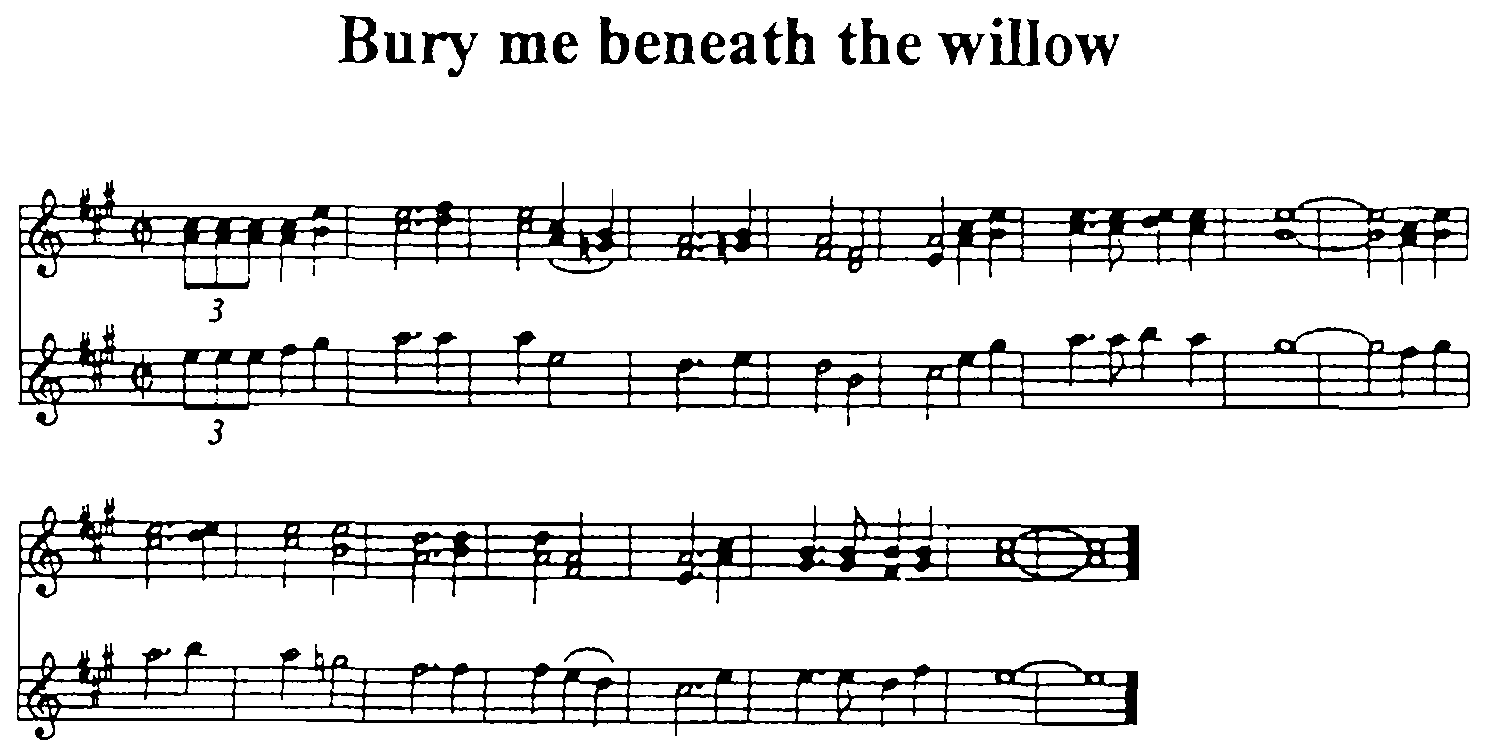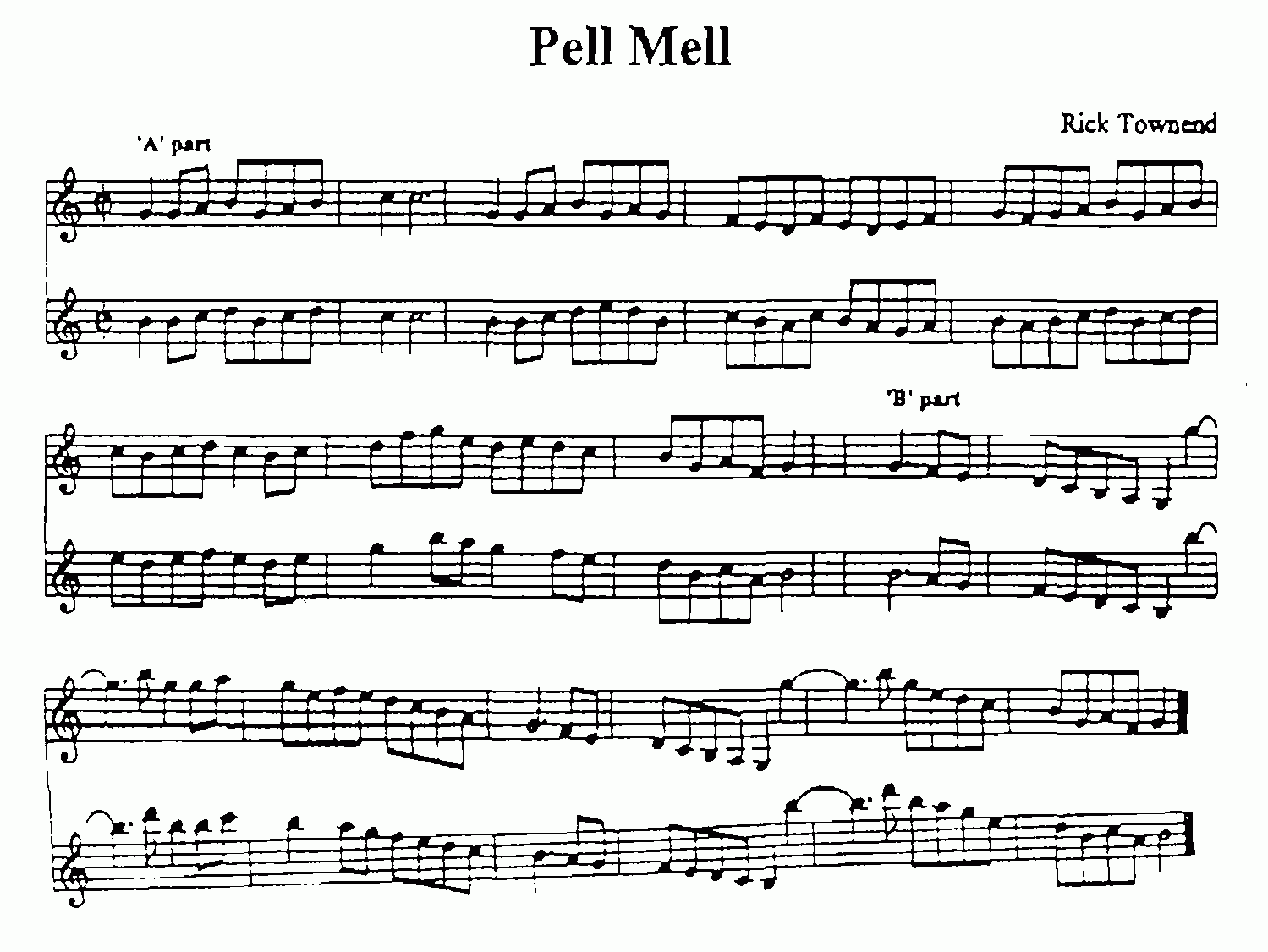Bluegrass Your Fiddle Part 9
Bluegrass Fiddle Tuition by Rick Townend
| Share page | Visit Us On FB |
Bluegrass your Fiddle Part 9
More about Twin Fiddles
Having looked at some arrangements from the 1950s last time. 1 thought I'd come right up to the cutting edge of bluegrass and try a 'four-line' arrangement [i.e. where each fiddle plays two notes all the time]. This isn't really a new musical idea, as this was the fashion with vocal harmonies in the 1950s, creating a "cool-jazz' feel to the music. Let's try it out, using "In the Pines'' as an example. I've kept the lead line at the top, as did those 1950s vocal arrangements, so that there are three harmony lines underneath. Each chord thus formed is therefore a 6th, 7th, diminished, or something even less like a classic bluegrass sound. I've given the "lead" fiddle lines 1 & 3 (counting from the top) and the 'harmony' fiddle lines 2 & 4, but this isn't set in stone.
Perhaps this is the place for my "homily of the month'' - about rules in bluegrass music. It's easy to see bluegrass as a highly regimented musical discipline - only certain prescribed instruments - nothing electric (except possibly bass) -singing in a strict harmony style - in fact to see some bands you might think bluegrass was only allowed in G. A or D. But if you look at the background of the Appalachian people whose music is the main source of bluegrass material and general feel, you'll see a rugged individualism probably second to none on the planet. I really can't think that Bill Monroe, or Ralph Stanley, or any of those people changed the way they made their music just because of what someone else said. Although I'm sure they have all taken immense care to be true to the spirit of the music as they believed it to be—and slightly different in each case. So, in all the examples I've given, and in any other tutorial you read, let your own feeling of the essence of what you love about the music be a part of the equation. All that 1 (or anyone else) can do is to show you what I do, or how to make a 'typical' bluegrass sound. End of Homily!
All the twin-fiddle examples so far have been pre-arranged - set pieces, so to speak. However, it's perfectly possible to play twin fiddles without advance notice, as long as you and your 'twin' are both familiar with the tune and its general harmonic feel, or if it has a fairly straightforward tune and backing chords. You can work, as above, with one playing the tune and the other doing all the harmony work, but sometimes it's easier for one fiddle to play the tune-plus-one-harmony and the other to play a second harmony part (or two—with an ad-hoc arrangement you needn't be fussy about over-lapping). See how a break for "Bury me Beneath the Willow" is played like this. Lastly, here is a twin fiddle version of "Pell-Mell", a fast fiddle tune I wrote—originally on the banjo, but the fiddle sort of took over. The key is 'G-mixolydian', i.e. using F rather than F#, so I've left the C# out of the key signature. In the 'B' part, the harmony fiddler moves his/her left hand up the neck in bars 3-4, until the A note: playing this on the open A-string give you the chance to get back down to first position. Alternatively you could come down over the E note in bar 4. As you can see, at this speed no one is going to try double stops, so it's two single lines all the way. Mind you, you could add a third fiddle 
To buy books Bluegrass Fiddle check the Bluegrass Fiddle Collection at Sheet Music Plus.
You may also be interested in other Bluegrass Related Items on this site:
Playing Bluegrass
Bluegrass Harmony Singing - Tutorial Learning Bluegrass Jamming -Tutorial Learning to play the bluegrass instruments by Rick Townend Bluegrass Your Fiddle, Insiders guide and tutorial on Bluegrass Fiddling by Rick Townend A more complete definition of bluegrass and its background